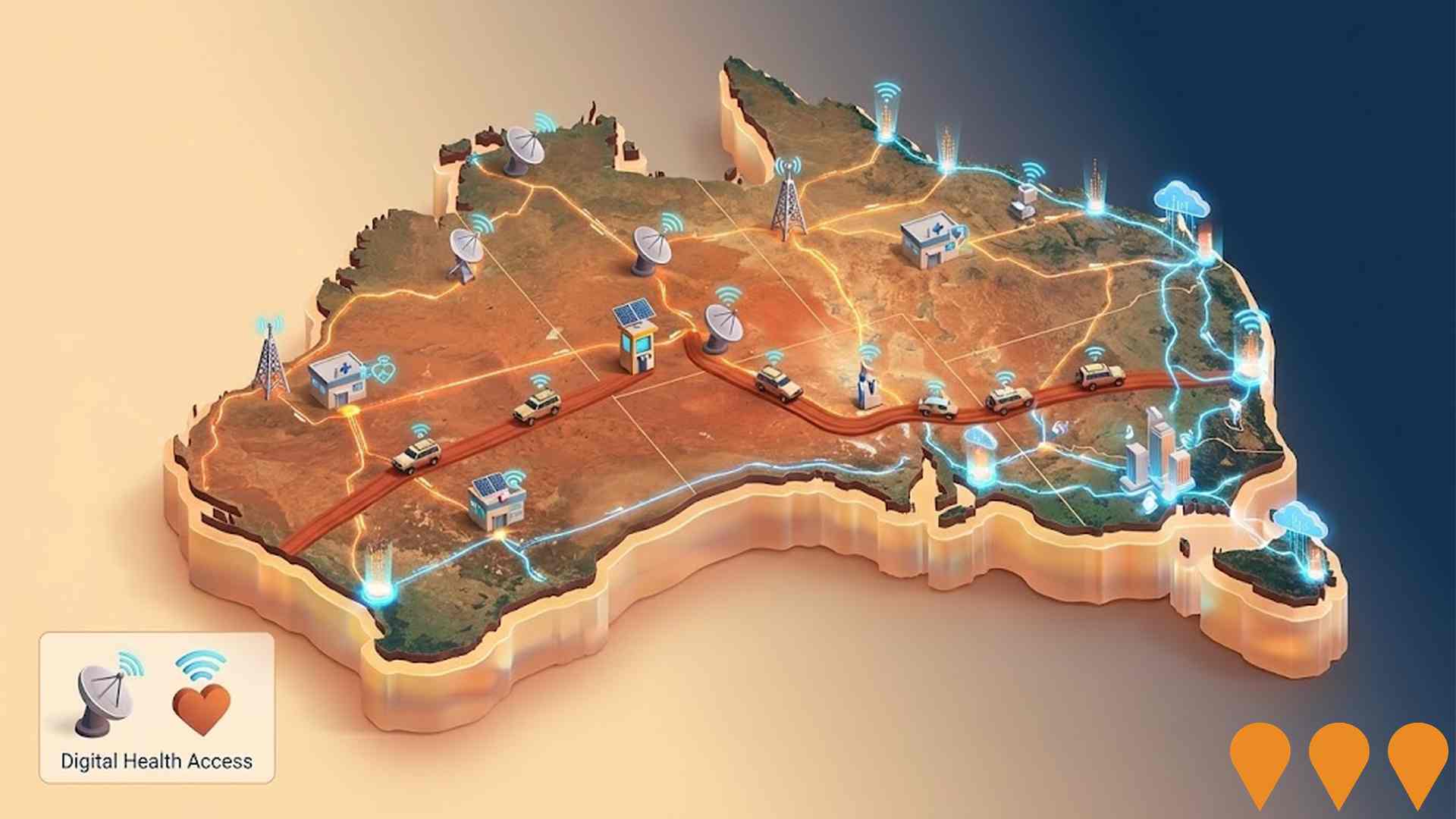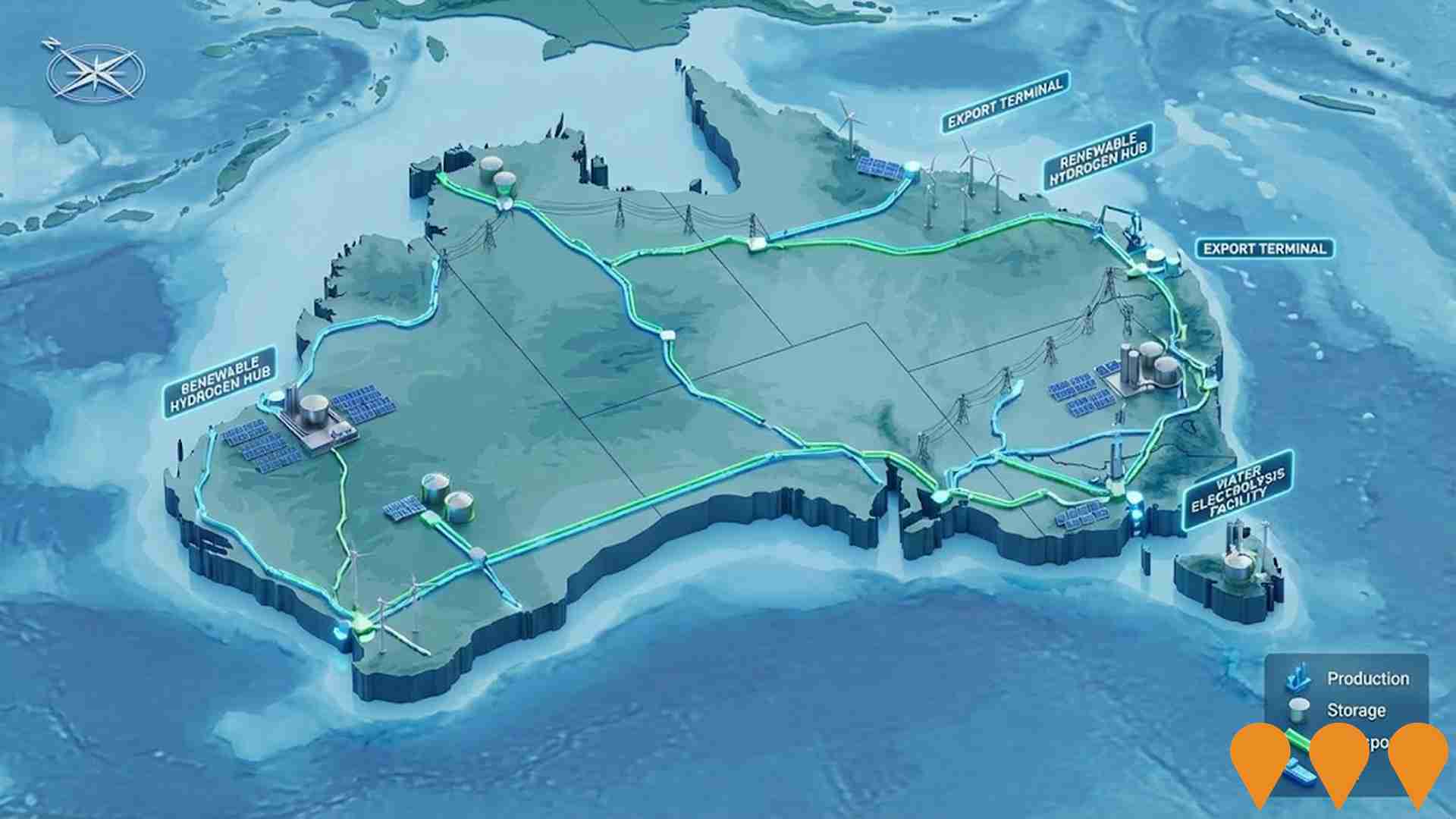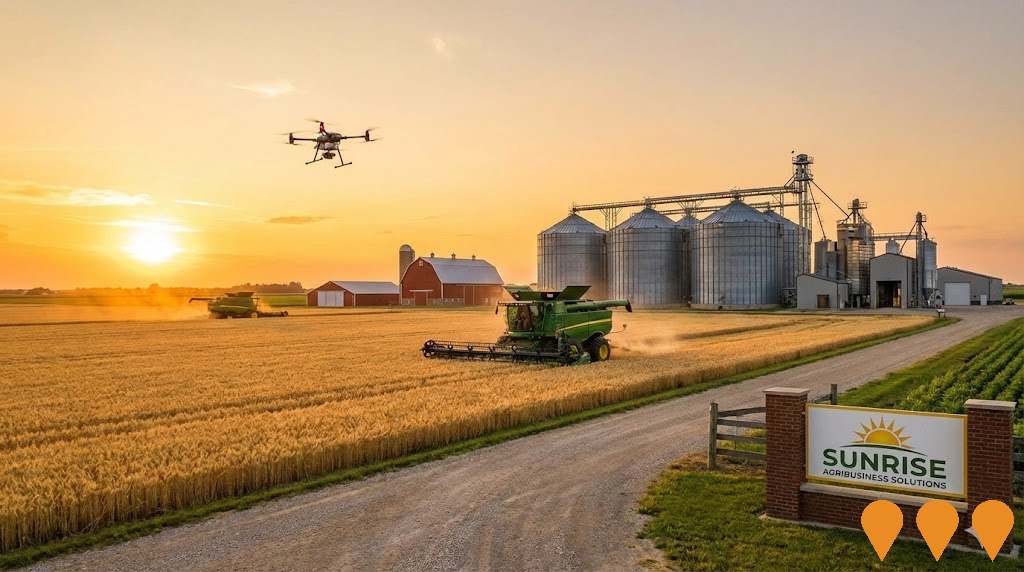Chart Color Schemes
est. as @ -- *
ABS ERP | -- people | --
2021 Census | -- people
Sales Activity
Curious about local property values? Filter the chart to assess the volume and appreciation (including resales) trends and regional comparisons, or scroll to the map below view this information at an individual property level.
Find a Recent Sale
Sales Detail
Population
West Coast has shown very soft population growth performance across periods assessed by AreaSearch
Based on AreaSearch's analysis, West Coast (Tas.)'s population is around 4365 as of August 2025. This reflects an increase of 98 people (2.3%) since the 2021 Census which reported a population of 4267 people. The change is inferred from the estimated resident population of 4339 from the ABS as of June 2024 and an additional 26 validated new addresses since the Census date. This level of population equates to a density ratio of 1.1 persons per square kilometer. West Coast's 2.3% growth since census positions it within 1.0 percentage points of the SA3 area (3.3%), demonstrating competitive growth fundamentals. Population growth for the area was primarily driven by overseas migration that contributed approximately 72.4% of overall population gains during recent periods.
AreaSearch is adopting ABS/Geoscience Australia projections for each SA2 area, as released in 2024 with 2022 as the base year. For any SA2 areas not covered by this data, and to estimate growth by age group in the years post-2032, the Tasmania State Government's Regional/LGA projections are adopted with adjustments made employing a method of weighted aggregation of population growth from LGA to SA2 levels. Moving forward with demographic trends, projections indicate a decline in overall population, with the area's population expected to reduce by 449 persons by 2041 according to this methodology. However, growth across specific age cohorts is anticipated, led by the 45 to 54 age group which is projected to grow by 165 people.
Frequently Asked Questions - Population
Development
AreaSearch assessment of residential development drivers sees a low level of activity in West Coast, placing the area among the bottom 25% of areas assessed nationally
West Coast has seen approximately seven new homes approved annually over the past five financial years, totalling 36 homes. In FY26 so far, one approval has been recorded. Over these five years, an average of 1.3 new residents per dwelling was observed. However, this figure decreased to -1.7 people per dwelling over the past two financial years. Development projects averaged $150,000 in construction value, lower than regional levels.
This year, $9.6 million in commercial development approvals have been recorded. Compared to Rest of Tas., West Coast records significantly lower building activity, 53.0% below the regional average per person. New construction has been exclusively standalone homes, maintaining the area's traditional low density character. The estimated population per dwelling approval is 2533 people. With stable or declining population expected, reduced pressure on housing is anticipated, potentially benefiting buyers.
With population expected to remain stable or decline, West Coast should see reduced pressure on housing, potentially creating opportunities for buyers.
Frequently Asked Questions - Development
Infrastructure
West Coast has emerging levels of nearby infrastructure activity, ranking in the 22ndth percentile nationally
No changes can significantly affect an area's performance like modifications to local infrastructure, major projects, and planning initiatives. A total of zero projects have been identified by AreaSearch that could potentially impact this area. Notable projects include Cethana Pumped Hydro Energy Storage Project, Tasmanian North West Renewable Energy Zone (REZ), Tasmanian Irrigation Schemes: Tranche 3, and Marinus Link, with the following list providing details on those most likely to be relevant.
Professional plan users can use the search below to filter and access additional projects.
INFRASTRUCTURE SEARCH
 Denotes AI-based impression for illustrative purposes only, not to be taken as definitive under any circumstances. Please follow links and conduct other investigations from the project's source for actual imagery. Developers and project owners wishing us to use original imagery please Contact Us and we will do so.
Denotes AI-based impression for illustrative purposes only, not to be taken as definitive under any circumstances. Please follow links and conduct other investigations from the project's source for actual imagery. Developers and project owners wishing us to use original imagery please Contact Us and we will do so.
Frequently Asked Questions - Infrastructure
Enabling Digital Health Services for Regional and Remote Australia
National initiative to expand and improve digital health access for people in regional and remote Australia. Focus areas include enabling telehealth and virtual care, upgrading clinical systems and connectivity, supporting secure information exchange, and building workforce capability in digital health, aligned with the Australian Government's Digital Health Blueprint and Action Plan 2023-2033.

Enabling Infrastructure for Hydrogen Production
Australia has completed the National Hydrogen Infrastructure Assessment (NHIA) to 2050 and refreshed its National Hydrogen Strategy (2024). The programmatic focus has shifted to planning and enabling infrastructure through measures such as ARENA's Hydrogen Headstart and the Hydrogen Production Tax Incentive (from April 2025). Round 2 of Hydrogen Headstart consultation occurred in 2025. Collectively these actions aim to coordinate investment in transport, storage, water and electricity inputs linked to Renewable Energy Zones and priority hubs, supporting large-scale renewable hydrogen production and future export supply chains.

Bulk Water Supply Security
Nationwide program led by the National Water Grid Authority to improve bulk water security and reliability for non-potable and productive uses. Activities include strategic planning, science and business cases, and funding of state and territory projects such as storages, pipelines, dam upgrades, recycled water and efficiency upgrades to build drought resilience and support regional communities, industry and the environment.

National EV Charging Network (Highway Fast Charging)
Partnership between the Australian Government and NRMA to deliver a backbone EV fast charging network on national highways. Program funds and co-funds 117 DC fast charging sites at roughly 150 km intervals to connect all capital cities and regional routes, reducing range anxiety and supporting EV uptake.

Network Optimisation Program - Roads
A national program concept focused on improving congestion and reliability on urban road networks by using low-cost operational measures and technology (e.g., signal timing, intersection treatments, incident management) to optimise existing capacity across major city corridors.

Cethana Pumped Hydro Energy Storage Project
The Cethana pumped hydro project, led by Hydro Tasmania, is part of the Battery of the Nation initiative to enhance Tasmania's renewable storage and generation. It utilizes Lake Cethana as the lower storage, with a new upper storage, underground power station, and tunnels. The project has a generating capacity of 750 MW and storage capacity of 20 hours, requiring transmission upgrades and Marinus Link interconnection.

Tasmanian North West REZ
The project is a renewable energy zone in North West Tasmania, expanding transmission capacity to support 1 GW of new generation by 2020s, ultimately enabling up to 9.5 GW capacity.

Tasmanian Irrigation Schemes: Tranche 3
Development of sustainable water capture and distribution systems in Tasmania to enhance agricultural productivity by enabling dryland farms to transition to higher-value enterprises like fruit or viticulture.

Employment
Employment conditions in West Coast face significant challenges, ranking among the bottom 10% of areas assessed nationally
West Coast Tasmania has a diverse workforce with both white and blue collar jobs, notably strong in manufacturing and industrial sectors. The unemployment rate was 7.8% as of June 2025, while employment grew by an estimated 2.6% over the previous year.
There were 1,873 residents employed in June 2025, with an unemployment rate of 3.8%, higher than Rest of Tas.'s rate of 3.9%. Workforce participation was lower at 49.0%, compared to Rest of Tas.'s 55.7%. Key employment industries included mining, accommodation & food services, and education & training. Mining stood out with employment levels at 12.6 times the regional average.
Conversely, health care & social assistance employed only 7.3% of local workers, below Rest of Tas.'s 16.5%. Many residents may commute elsewhere for work based on Census data analysis. Between June 2024 and June 2025, employment levels increased by 2.6%, while the labour force grew by 2.3%, reducing the unemployment rate by 0.3 percentage points. In contrast, Rest of Tas. saw employment contract by 0.5% and the labour force fall by 0.6%. National employment forecasts from Jobs and Skills Australia (May 2025) project national growth of 6.6% over five years and 13.7% over ten years. Applying these projections to West Coast's employment mix suggests local growth of approximately 4.9% over five years and 11.2% over ten years, although these are simple extrapolations for illustrative purposes only.
Frequently Asked Questions - Employment
Income
Income figures position the area below 75% of locations analysed nationally by AreaSearch
West Coast's median taxpayer income in financial year 2022 was $48,802. The average income was $61,684. This is lower than the national average. In contrast, Rest of Tas.'s median income was $47,358 and average income was $57,384. Based on a 13.83% growth in wages since financial year 2022, estimated incomes as of September 2025 would be approximately $55,551 (median) and $70,215 (average). According to the 2021 Census, household, family, and personal incomes in West Coast fall between the 2nd and 7th percentiles nationally. The largest segment of income earners comprises 31.7% earning $400 - $799 weekly. This differs from surrounding regions where the $1,500 - $2,999 category is predominant at 28.5%. Economic conditions indicate widespread financial pressure, with 43.4% of households having modest weekly budgets below $800. Despite modest housing costs allowing for 91.6% income retention, total disposable income ranks at the 7th percentile nationally.
Frequently Asked Questions - Income
Housing
West Coast is characterized by a predominantly suburban housing profile, with above-average rates of outright home ownership
West Coast's dwelling structure, as per the latest Census, consisted of 95.2% houses and 4.9% other dwellings (semi-detached, apartments, 'other' dwellings). In comparison, Non-Metro Tas. had 95.9% houses and 4.1% other dwellings. Home ownership in West Coast stood at 48.2%, with mortgaged dwellings at 24.6% and rented ones at 27.2%. The median monthly mortgage repayment was $650, significantly lower than Non-Metro Tas.'s average of $1,053. Weekly rent in West Coast was recorded at $160, compared to Non-Metro Tas.'s $200. Nationally, West Coast's mortgage repayments were substantially lower at $650 versus the Australian average of $1,863, and rents were also below the national figure of $375 at $160.
Frequently Asked Questions - Housing
Household Composition
West Coast features high concentrations of lone person households, with a lower-than-average median household size
Family households comprise 54.6% of all households, including 16.8% couples with children, 27.7% couples without children, and 9.5% single parent families. Non-family households account for the remaining 45.4%, with lone person households at 42.7% and group households comprising 2.7%. The median household size is 2.0 people, smaller than the Rest of Tas. average of 2.3.
Frequently Asked Questions - Households
Local Schools & Education
West Coast faces educational challenges, with performance metrics placing it in the bottom quartile of areas assessed nationally
The area has university qualification rates of 12.6%, significantly lower than the Australian average of 30.4%. Bachelor degrees are most common at 8.9%, followed by postgraduate qualifications (2.8%) and graduate diplomas (0.9%). Vocational credentials are prevalent, with 42.4% of residents aged 15+ holding such qualifications, including advanced diplomas (7.8%) and certificates (34.6%). Educational participation is high at 26.7%, with 11.5% in primary education, 6.5% in secondary education, and 2.9% in tertiary education.
Six schools operate within West Coast, educating approximately 467 students. The school mix includes four primary schools and two K-12 schools.
Frequently Asked Questions - Education
Schools Detail
Nearby Services & Amenities
Transport
No public transport data available for this catchment area.
Frequently Asked Questions - Transport
Transport Stops Detail
Health
Health performance in West Coast is a key challenge with a range of health conditions having marked impacts on both younger and older age cohorts
West Coast faces significant health challenges with various conditions affecting both younger and older age groups.
Approximately 51% (~2,208 people) have private health cover, which is relatively low. The most prevalent medical conditions are arthritis (affecting 11.1% of residents) and mental health issues (impacting 10.8%). Conversely, 60.7% report no medical ailments, compared to 65.0% in the Rest of Tas.. The area has a higher proportion of seniors aged 65 and over at 23.9% (1,044 people), compared to 22.0% in Rest of Tas.. Despite this, health outcomes among seniors are challenging but perform better than the general population in health metrics.
Frequently Asked Questions - Health
Cultural Diversity
West Coast is considerably less culturally diverse than average when assessed alongside AreaSearch's national rankings for language and cultural background related metrics
West Coast had lower cultural diversity, with 85.1% citizens, 87.6% born in Australia, and 95.6% speaking English only at home. Christianity was the dominant religion at 45.3%. Other religions were overrepresented at 1.4%, compared to 0.7% regionally.
Ancestry showed Australian at 33.8%, English at 32.9%, and Irish at 7.9%. Notable differences included Australian Aboriginal at 5.5% (vs 7.7%), Welsh at 0.6% (vs 0.4%), and Polish at 0.7% (vs 0.4%).
Frequently Asked Questions - Diversity
Age
West Coast hosts an older demographic, ranking in the top quartile nationwide
The median age in West Coast is 47, slightly higher than Rest of Tas.'s figure of 45 and significantly above Australia's 38 years. Comparing with Rest of Tas., the 55-64 cohort stands out at 16.4%, while the 15-24 group is underrepresented at 8.1%. This concentration in the 55-64 age group is notably higher than the national average of 11.2%. From 2021 to present, the 35-44 age group has increased from 10.7% to 12.2%, and the 65-74 cohort has grown from 13.5% to 14.8%. Conversely, the 45-54 cohort has decreased from 14.8% to 12.7%, and the 0-4 group has dropped from 4.9% to 3.7%. Looking ahead to 2041, demographic projections indicate significant shifts in West Coast's age structure. The 45-54 cohort is projected to grow by 170 people (31%), from 556 to 727. Senior residents aged 65 and above will contribute to 52% of population growth, reflecting demographic aging trends. Conversely, population declines are projected for the 0-4 and 65-74 age cohorts.

